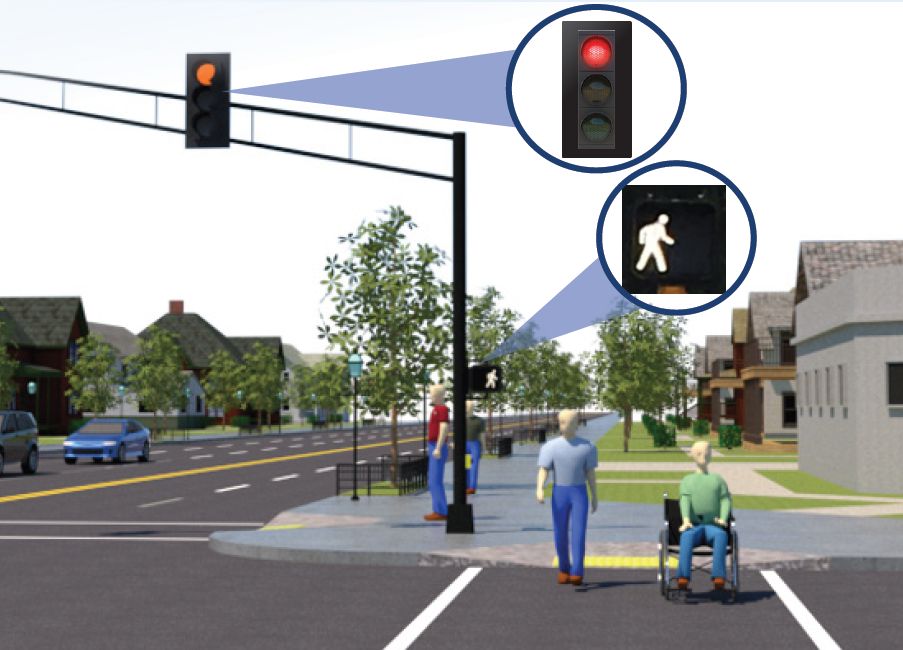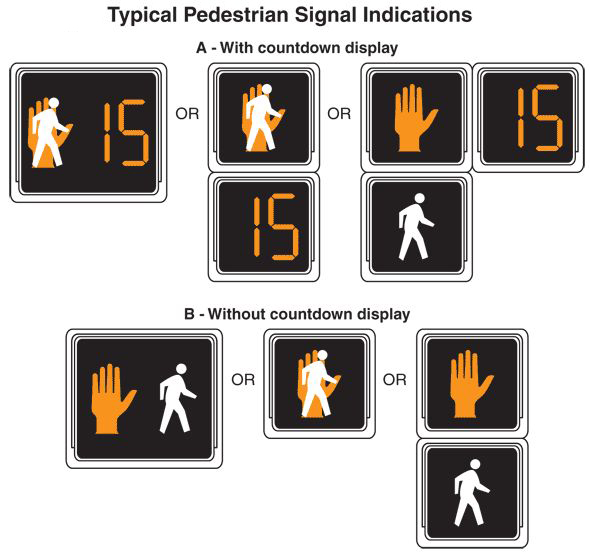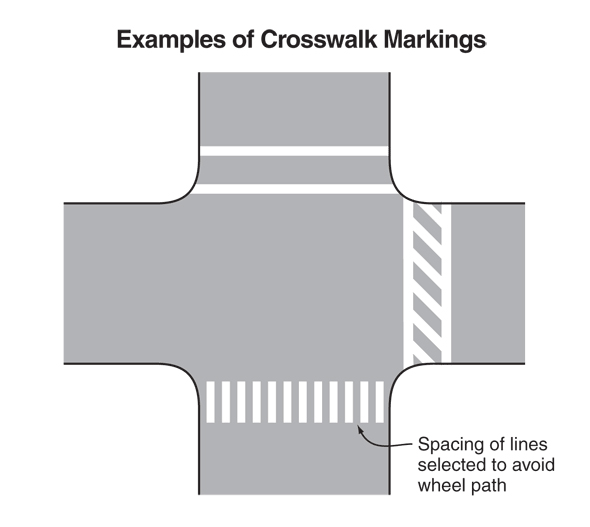What Does the Data Say?
On average, 880 pedestrian-related crashes per year occur in or near intersections in North Carolina, about 40 percent of all pedestrian-related crashes. An average of 47 pedestrian fatalities per year occur in or near intersections, about 23 percent of all pedestrian fatalities.
Pedestrian-related crashes at intersections:
- Are often related to a vehicle turning at the intersection (35 percent of the time)
- Typically occur in urban commercial and residential areas
- Occur at signalized intersections about twice as often as intersections with stop signs
- Occur most often on 35 mph roads (49 percent), followed by 20-25 mph roads (20 percent) and 40-45 mph roads (20 percent)
- Typically occur during daylight (55 percent), followed by dark conditions lit by streetlight (29 percent)
The N.C. Department of Transportation uses several types of improvements for pedestrian safety at intersections. These improvements are designed to provide more visibility for pedestrians and coordinate the movements of pedestrians with vehicle traffic.
Three of the most common types of improvements NCDOT uses at intersections to keep pedestrians safer include:
- Leading Pedestrian Interval
- Pedestrian Signals
- Marked Intersection Crosswalks
Leading Pedestrian Interval

Source: Federal Highway Administration A Leading Pedestrian Interval provides a head start for pedestrians who are crossing the street at a signalized intersection.
Source: Federal Highway Administration A Leading Pedestrian Interval provides a head start for pedestrians who are crossing the street at a signalized intersection.
It also gives the pedestrian 3-7 seconds to begin their crossing before drivers are given a green signal.
This advanced timing helps drivers recognize that a pedestrian is crossing the intersection. This type of crosswalk technology also allows pedestrians to make drivers aware of their presence before taking a right or left turn.
Leading Pedestrian Intervals provide the following:
- Increases visibility for crossing pedestrians
- Reduces incidents between pedestrians & drivers
- Increases likelihood of drivers stopping for pedestrians
- Additional safety for slower pedestrians in the crosswalk
Pedestrian Signals
 Source: Federal Highway Administration
Source: Federal Highway Administration Pedestrian signals indicate the appropriate time for pedestrians to cross the street.
The display shows a walk or don’t walk symbol and is intended to coordinate the pedestrian crossings with the movement of vehicles through the intersection.
This coordination minimizes potentially dangerous conflicts between pedestrians and drivers.
Marked Intersection Crosswalks

 Source: Federal Highway Administration Crosswalks may be marked at an intersection, either with two parallel white lines or a series of white blocks painted across the street. These pavement markings increase the visibility of the crosswalk and alert drivers to expect pedestrians in that location.
Source: Federal Highway Administration Crosswalks may be marked at an intersection, either with two parallel white lines or a series of white blocks painted across the street. These pavement markings increase the visibility of the crosswalk and alert drivers to expect pedestrians in that location.
